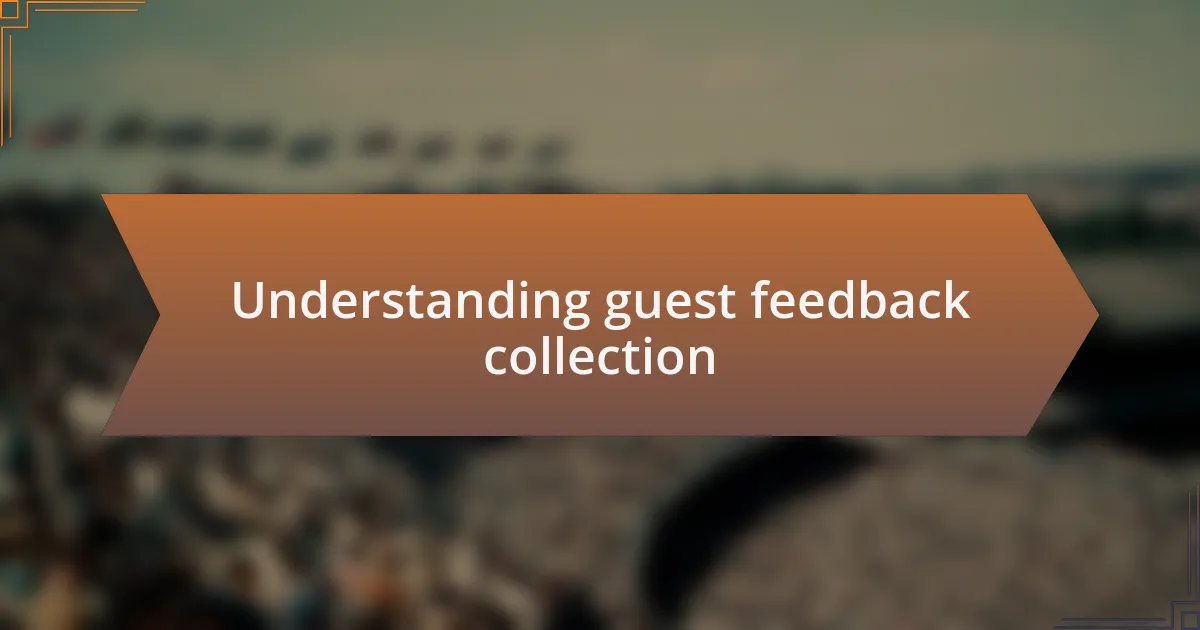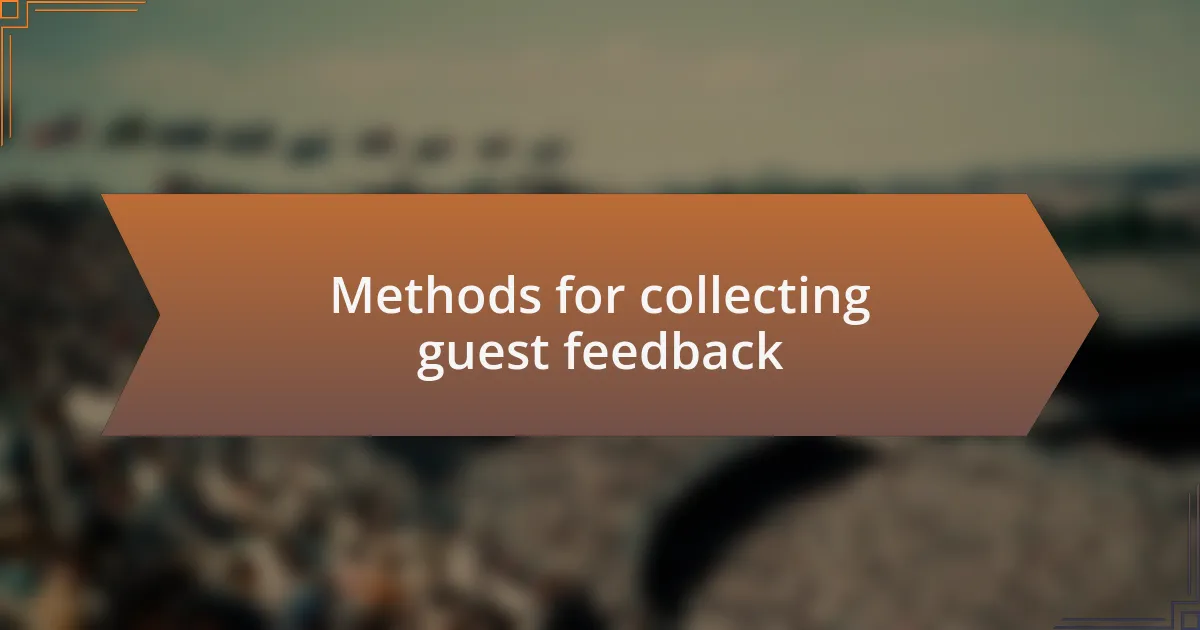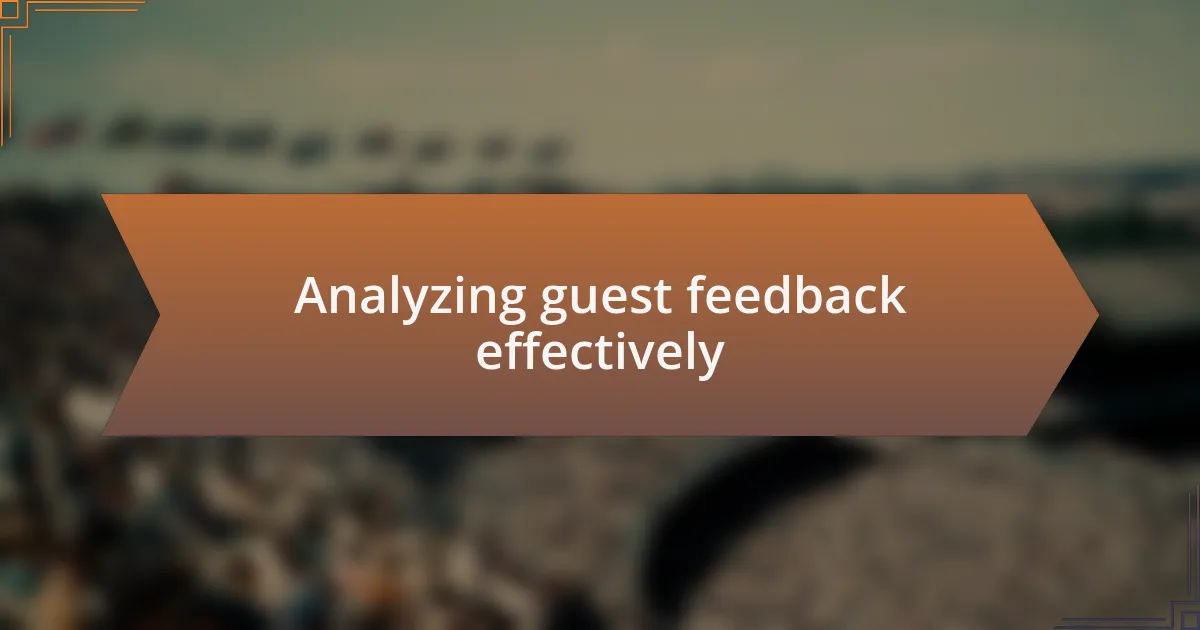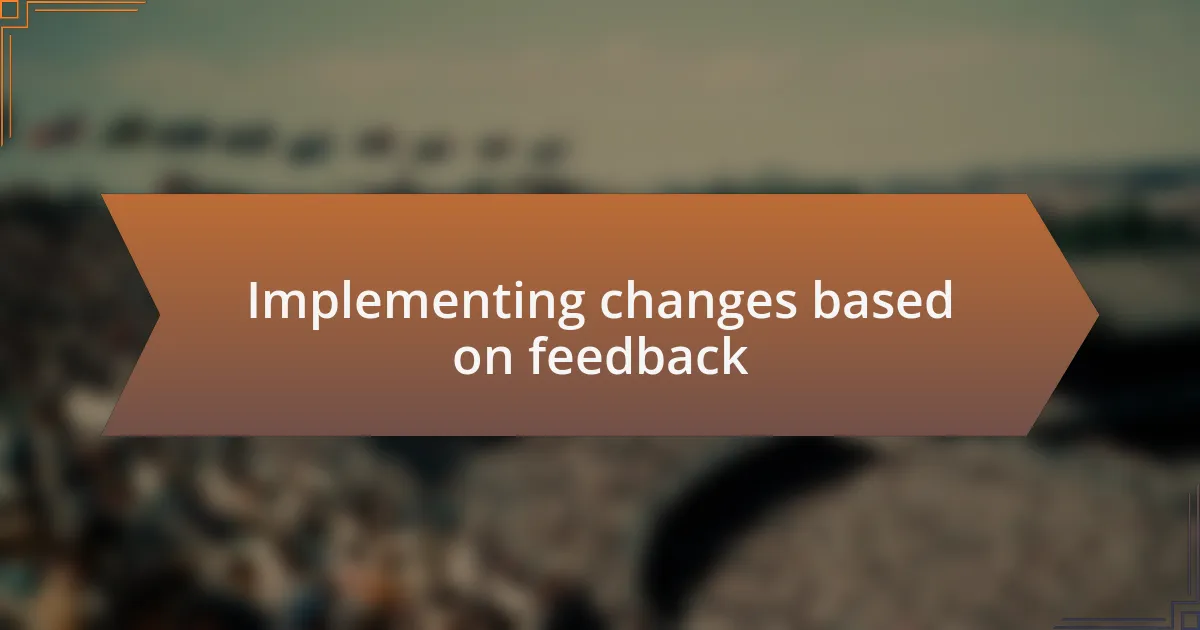Key takeaways:
- Guest feedback collection fosters a dialogue that helps understand expectations and improves event experiences.
- Effective methods include digital surveys, one-on-one conversations, and comment cards, each offering unique insights.
- Analyzing feedback reveals patterns that inform decisions and can lead to significant improvements in future events.
- Implementing changes based on feedback creates a more engaging atmosphere and strengthens the feedback loop for continuous enhancement.

Understanding guest feedback collection
Understanding guest feedback collection is more than just gathering opinions; it’s about creating a dialogue with your guests. I remember a particular event where I set up a simple feedback station, and the insights I gained were invaluable. Guests opened up about their experiences, which helped me understand their expectations better.
What strikes me most is how often feedback reveals details we might overlook. For instance, I once learned that a guest appreciated the ambiance more than the program itself. This made me realize that every element—lighting, music, and decor—plays its part in crafting a memorable experience. Have you ever had a moment when feedback truly changed your perspective on an event?
Collecting feedback isn’t just a checkbox activity; it’s a vital component of continuous improvement. Emotional insights from guests can guide us toward refining our services and offerings. I’ve found that establishing trust during feedback collection encourages openness. When guests feel valued, they are more likely to share their genuine thoughts, which can lead to transformative changes.

Methods for collecting guest feedback
When it comes to collecting guest feedback, I’ve discovered that surveys can be incredibly effective. I often send out brief digital surveys a few days after an event. These quick questionnaires make it easy for guests to share their thoughts while everything is still fresh in their minds. Have you ever noticed that a simple question can unlock a wealth of information? I certainly did when I asked what aspect of the event they enjoyed the most.
Another method I frequently employ is one-on-one conversations during the event. There’s something special about directly engaging with guests and asking them how they’re finding the experience at that moment. I once approached a group during a breakout session, and they revealed that the networking opportunities were far more valuable to them than I’d anticipated. This real-time feedback not only made me feel more connected to my guests but provided immediate insights that I could act upon even before the event concluded.
Then there are comment cards—simple but often overlooked tools in feedback collection. I always place cards in strategic locations, like near the exit or refreshment areas. I vividly recall an event where a guest scribbled a suggestion that led us to change our catering partners. It was a small change, but it made a big difference in guest satisfaction for our future events. These little cards can capture thoughts that might not come up otherwise. What hidden gems could you discover if you encouraged guests to jot down their feelings as they leave?

Tools for effective feedback collection
Feedback collection tools have evolved, and one of my favorites is digital platforms. I’ve found that tools like SurveyMonkey or Google Forms make collecting responses incredibly efficient. The automated analytics provide a wealth of insights, and I remember feeling both excited and relieved when I saw positive trends in guest satisfaction after an event. Isn’t it reassuring to know that technology can streamline such an essential part of event management?
Another tool I often use is social media. It’s remarkable how platforms like Instagram or Twitter can serve as immediate feedback channels. After an event, I took to Twitter to ask attendees to share their best moments using a specific hashtag. The plethora of positive comments not only filled me with pride but also offered real-time feedback on what resonated with guests. How else could we tap into such an open conversation with our audience?
Finally, don’t underestimate the power of informal feedback through event apps. Many attendees appreciate the convenience of leaving their thoughts right within the app they’ve been using throughout the event. I distinctly recall an instance when a guest sent me a message via the app about an audio issue during a session. Addressing it immediately made them feel heard and valued. How powerful is it to transform a moment of discomfort into an opportunity for connection?

Analyzing guest feedback effectively
Understanding how to analyze guest feedback is crucial for continuous improvement. When I dive into the data, I look for patterns that might reveal underlying issues or highlight successful elements of my events. For instance, after conducting a survey on seating arrangements, I was surprised to see a spike in dissatisfaction linked to a specific area of the venue. This insight prompted a reassessment of our layout and made me question: what might we have overlooked in our initial planning?
I’ve learned that comparing feedback across different events is equally enlightening. By tracking changes in guest sentiment over time, I can assess the effectiveness of adjustments I’ve made. During one event, after introducing welcome drinks based on previous feedback, the improvement in guest enjoyment was palpable. I remembered the joy of reading that feedback and thinking, “Wow, little changes can create big impacts!”
Additionally, when analyzing qualitative feedback, I always take time to read through personal comments. I recall a kind note from a guest who shared how our team made them feel at home. It struck me that such heartfelt responses underscore the importance of personal touches in our events. How often do we miss the stories behind the numbers? Emphasizing moments like these helps me connect emotionally with my guests, shaping future events in ways that truly resonate.

Implementing changes based on feedback
Implementing changes based on feedback is where the magic happens. For instance, after receiving comments about the catering quality at a recent event, I decided to bring in a local chef I had always admired. The change wasn’t just about better food; it transformed the entire atmosphere, and the guests raved about the experience. Their enthusiasm reminded me how impactful listening to feedback can be.
I strongly believe that feedback should guide our actions regularly, not just during evaluations. Once, I noticed an uptick in requests for more interactive sessions. Instead of chalking it up to one-off comments, I took a leap of faith and introduced breakout workshops at our next event. The energy was electric, and I couldn’t help but smile at the sight of engaged attendees collaborating and sharing ideas. Isn’t it fascinating how a simple adjustment can elevate an entire experience?
Moreover, I always keep an open line of communication after implementing changes. After a major revision stemming from guest insights, I reached out to attendees via email, seeking their thoughts on the new setup. Their responses not only affirmed the changes but also sparked further ideas for improvement. It’s a reminder that the feedback loop is ongoing and integral; how can we ever stop evolving if we remain receptive to our guests’ voices?